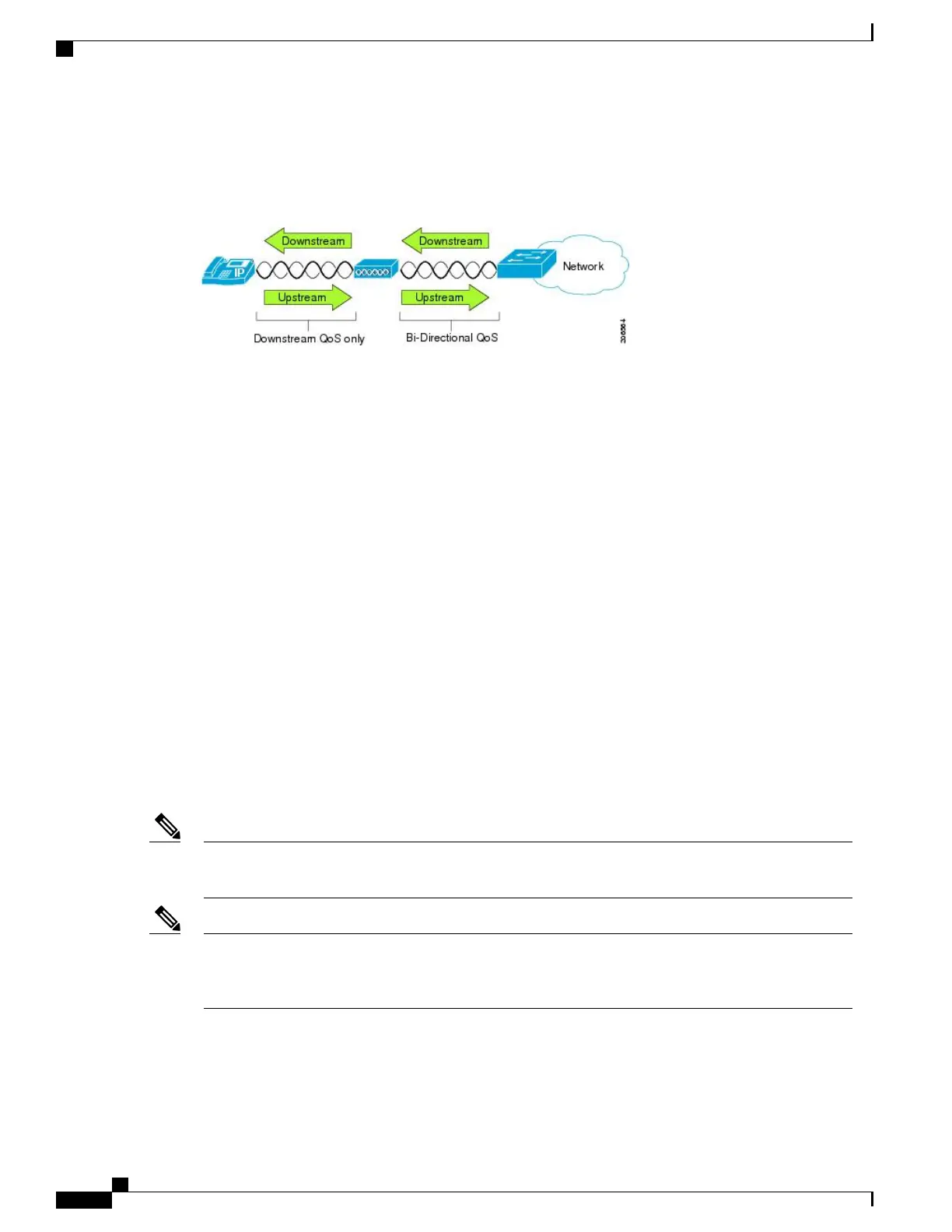Unlike wired networks with dedicated bandwidths, wireless LANs consider traffic direction when implementing
QoS. Traffic is classified as upstream or downstream relative to the AP as shown in the following figure.
Figure 8: Voice Traffic in a Wireless Network
Beginning with Cisco IOS release 12.2(11)JA, Cisco Aironet APs support the contention-based channel access
mechanism called Enhanced Distributed Coordination Function (EDCF). The EDCF type of QoS has up to
eight queues for downstream (toward the 802.11b/g clients) QoS. You can allocate the queues based on these
options:
•
QoS or Differentiated Services Code Point (DSCP) settings for the packets
•
Layer 2 or Layer 3 access lists
•
VLANs for specific traffic
•
Dynamic registration of devices
Although up to eight queues on the AP can be set up, you should use only two queues for voice traffic so as
to ensure the best possible voice QoS. Place voice (RTP) and signaling (SIP) traffic in the highest priority
queue, and place data traffic in a best-effort queue. Although 802.11b/g EDCF does not guarantee that voice
traffic is protected from data traffic, you should get the best statistical results by using this queuing model.
The queues are:
•
Best Effort (BE) - 0, 3
•
Background (BK) - 1, 2
•
Video (VI) - 4, 5
•
Voice (VO) - 6, 7
The Cisco Desktop Collaboration Experience marks the SIP signaling packets with a DSCP value of 24
(CS3) and RTP packets with DSCP value of 46 (EF).
Note
Call Control (SIP) is sent as UP4 (VI). Video is sent as UP5 (VI) when Admission Control Mandatory
(ACM) is disabled for video (Traffic Specification [TSpec] disabled). Voice is sent as UP6 (VO) when
ACM is disabled for voice (TSpec disabled).
Note
The following table provides a QoS profile on the AP giving priority to voice, video, and call control (SIP)
traffic.
Cisco Desktop Collaboration Experience DX650 Administration Guide, Release 10.1(1)
84
VoIP Wireless Network Components

